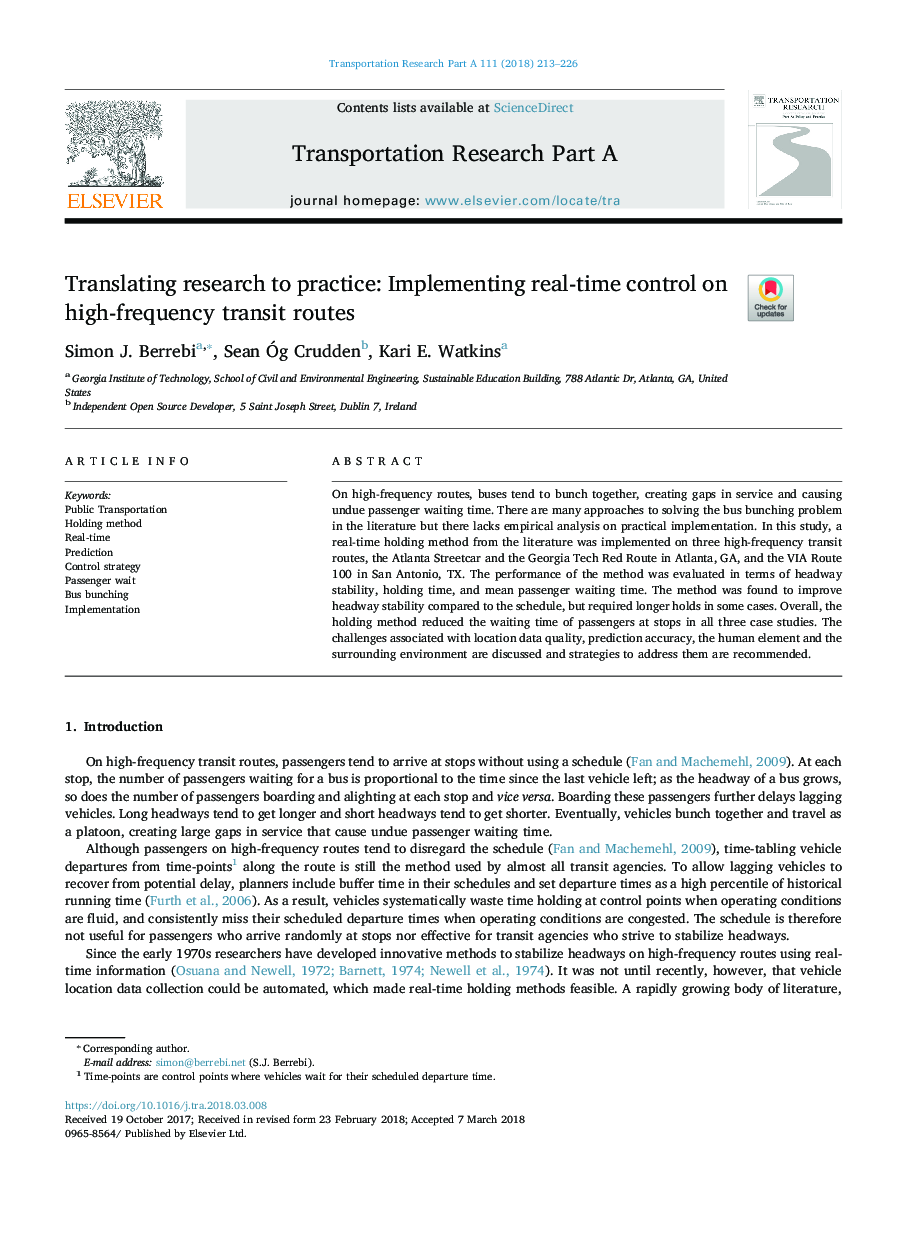| Article ID | Journal | Published Year | Pages | File Type |
|---|---|---|---|---|
| 6780287 | Transportation Research Part A: Policy and Practice | 2018 | 14 Pages |
Abstract
On high-frequency routes, buses tend to bunch together, creating gaps in service and causing undue passenger waiting time. There are many approaches to solving the bus bunching problem in the literature but there lacks empirical analysis on practical implementation. In this study, a real-time holding method from the literature was implemented on three high-frequency transit routes, the Atlanta Streetcar and the Georgia Tech Red Route in Atlanta, GA, and the VIA Route 100 in San Antonio, TX. The performance of the method was evaluated in terms of headway stability, holding time, and mean passenger waiting time. The method was found to improve headway stability compared to the schedule, but required longer holds in some cases. Overall, the holding method reduced the waiting time of passengers at stops in all three case studies. The challenges associated with location data quality, prediction accuracy, the human element and the surrounding environment are discussed and strategies to address them are recommended.
Related Topics
Physical Sciences and Engineering
Engineering
Civil and Structural Engineering
Authors
Simon J. Berrebi, Sean Ãg Crudden, Kari E. Watkins,
